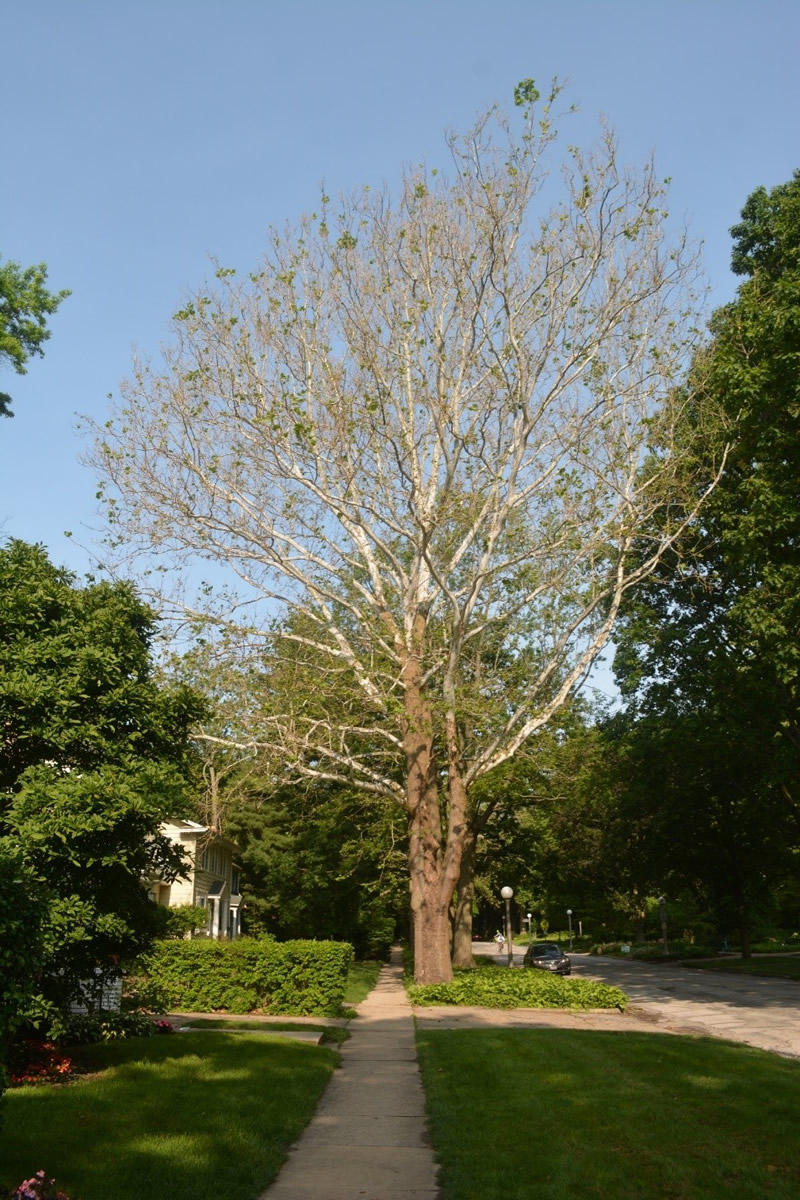Issue 4, June 1, 2020
Sycamore Anthracnose
Sycamore trees have been slow to leaf out this spring, a repeat to what occurred last year. Most of the sycamore trees in central Illinois have remained bare, making them easy to spot from a distance. Infections from this fungal disease occur almost every spring. However, the severity of the infection is dependent on the weather. Aside from the recent summer-like weather, Spring 2020 has predominantly been cool and wet, favoring sycamore anthracnose.

Photo 1 Sycamore May 31, 2019. Urbana, IL
Sycamore anthracnose appears in three phases distinguished by the plant parts that are affected.
Bud and Twig Blight
Bud and twig blight occurs while the host tree is dormant. During this phase, small cankers kill individual buds or the tips of one-year-old shoots. Mild weather during host dormancy allows the cankers and stem lesions to continue expanding. Severe outbreaks have been reported to kill more than 95% of a tree’s buds.
Shoot Blight
Shoot blight occurs after new leaves have emerged. Sunken, girdling cankers form below the twig tips, causing the death of young shoots. Symptoms associated with this phase are often mistaken for frost injury. Damage is most prevalent when the average mean daily temperature during the two weeks following leaf emergence is below 55°F. Cooler temperatures likely prolong twig susceptibility. When the average temperatures are above 60°F during the same period, little or no shoot blight takes place.

Photo 2. Shoot Blight
Leaf Blight
The leaf blight phase occurs as a direct infection of new leaves. Symptoms appear as small to large, irregular, brown lesions that form along the veins to the leaf edges. This phase often results in premature leaf drop. Wet conditions and temperatures between 60°F and 75°F favor leaf blight.

Photo 3. Leaf Blight
Sycamore trees with serious anthracnose infections commonly recover by mid-July, as the second flush of growth matures (Photo 4). Thus, fungicides are not often warranted. However, fungicide injections may be a preventative option for clientele seeking to maintain the appearance of high-value trees. If you are looking to plant a sycamore, consider one of the resistant plane trees. Sycamores are highly susceptible, while London plane trees vary in their resistance. Be sure you are buying a resistant hybrid.

Photo 4: Sycamore (same as Photo 1) fully leafed out July 12, 2019
Author:
Travis Cleveland